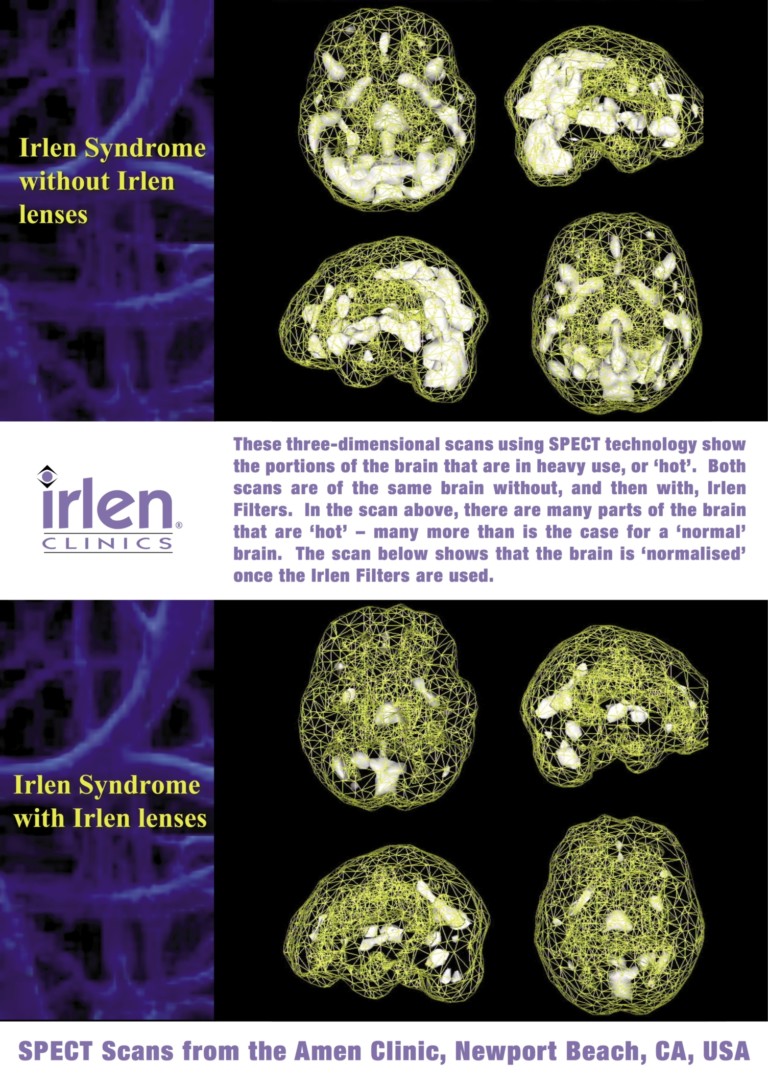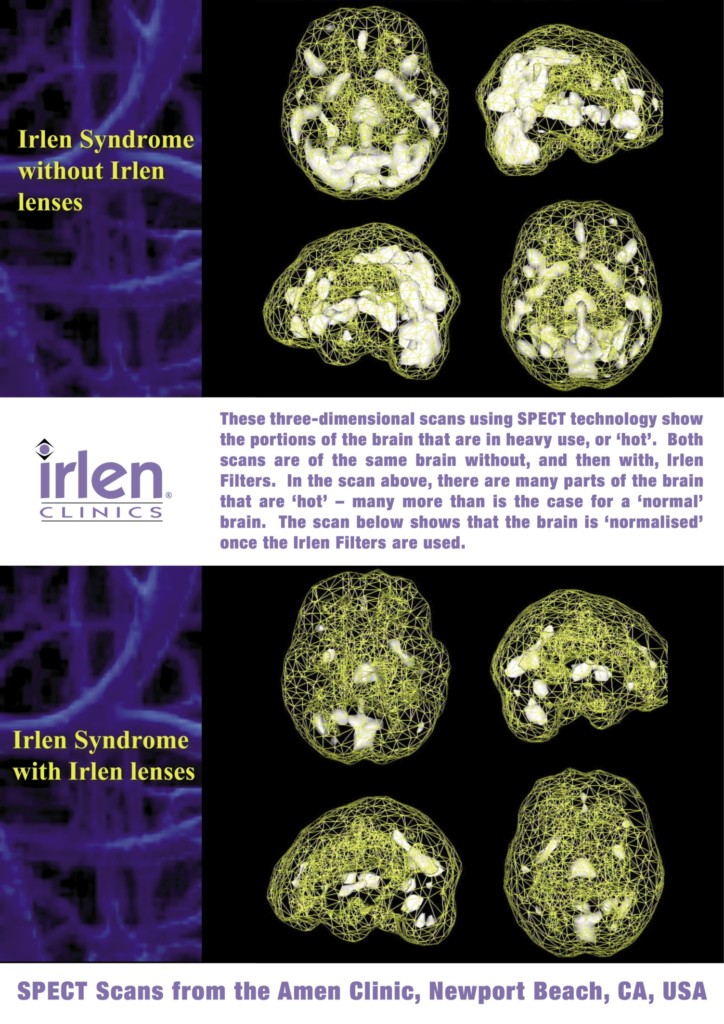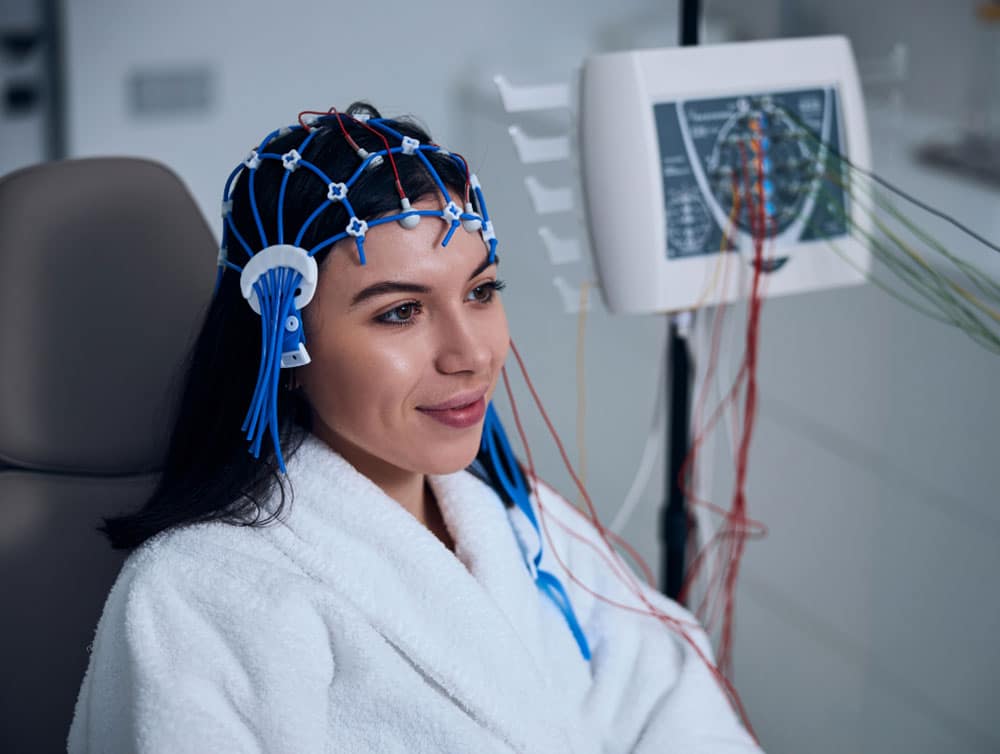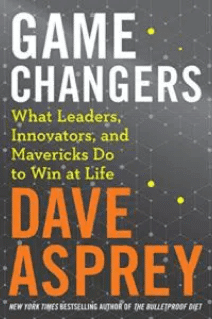
Guest Post By Helen Irlen
In honor of Irlen Awareness Week, here is a guest post by my friend and colleague Helen Irlen, founder of the Irlen Method. At the Bulletproof Conference I revealed the real reason I wear orange “rockstar glasses,” and now you can learn more here about how to hack your own unique sensitivity levels to color and light to perform better and relieve stress.
Hint: there’s a whole science behind it, and a free self-test from the Irlen Institute to get you started. Also, don’t miss my recent podcast with Helen Irlen. Enjoy!
-Dave
Is today’s high tech world stressing you out?
You may be surprised at the price you pay to survive and thrive in today’s high tech world, surrounded by florescent lights, computers, white boards, iPads, smartphones, and big screen TVs. You may be working harder, putting in more effort and compromising your immune system in your attempts to succeed.
However, with one Bulletproof solution you can be off and running, functioning at an optimal level without any unwanted stress or strain.
This week is the first worldwide Irlen Syndrome Awareness Week (ISAW), devoted to raising awareness about the problem that affects nearly 15% of the population and simple solution that can make the difference between achieving and excelling.
Why Irlen is a Bulletproof Solution
At the Irlen Institute, we have been using the science of color to transform people’s lives for over 35 years, and yet every day I am surprised by how little people know about color and its ability to improve performance and functioning.
At Irlen, we use non-invasive color filtering technology (Irlen Spectral Filters) to eliminate the stress on the brain that causes difficulties for so many people.
The result is better performance with less effort, improved attention and concentration, and a reduction in a host of unwanted physical symptoms from headaches to fatigue. As our patients’ daily functioning immediately improves, their performance increases considerably.
Watch this video (in full screen for best results) and try to read the words on the screen as they change and move, flicker and flash. This will let you experience what it’s like to have Irlen Syndrome.
Here’s a visual of the before and after effects of using Irlen lenses:
The Science of Color
Back in the early 1980’s I was working under a federal research grant with college-educated adults who struggled with learning and reading difficulties. It was at that time that I discovered color could reduce stress on the brain and allow it to function better. These intelligent adults had been told their entire lives if they just tried harder, they would do better. No! In fact, the harder they tried, the worse things got.
My history as a school psychologist and learning disabilities specialist told me we weren’t asking the right questions. Something was missing, and it would hold the solution for these millions of individuals. Color technology turned out to be the missing link.
How Common Is This Problem?
Irlen Syndrome is more common than heart disease or asthma, but standard tests aren’t able to identify it. The result is that millions of people go affected but unidentified. The problem is more common in populations with specific difficulties, such as reading problems and ADHD, but even gifted and highly successful individuals can be impacted by this issue – often working harder and suffering more than necessary to succeed.
Unfortunately, most people remain unaware of the true source of their problems. While most people inherit Irlen Syndrome, Irlen symptoms can also be acquired as a result of brain injury and concussion, often coinciding with headaches and migraines that are medically resistant and tend not to respond to other types of treatment.
Signs Color Could Be A Solution For You Or Someone You Know
People of all ages and ethnicities may experience signs of Irlen Syndrome, which include light sensitivity, headaches or migraines, difficulty or discomfort when reading, fatigue, eye strain, and distorted print text or environment. In fact, the core issue with Irlen Syndrome is sensitivity to bright and fluorescent lights, but many people aren’t even aware that their brain is sensitive to lights.
If you wear sunglasses outside, you’re sensitive to light. It’s that simple. And, if you cannot read for more than 50 minutes without having to take a break because of strain, fatigue, or difficulty staying focused, then you probably need to wear color. Being in bright or fluorescent lights, reading on white paper, staring at a computer screen or iPad shouldn’t hurt, it shouldn’t make you tired or sleepy, and reading shouldn’t get harder the longer you try to do it.
The Importance of Raising Awareness
It’s essential for people to know there is a way to eliminate simple stress on the brain and instantly enhance performance, increase endurance, and exponentially improve their life. For some, failure to identify this issue can have severe consequences, ranging from academic and workplace difficulties to ongoing physical and emotional symptoms. For others, it more simply can mean the difference between getting by and getting ahead.
Irlen Syndrome Awareness Week (ISAW) highlights the importance and ease of correctly identifying and addressing Irlen Syndrome. We recently attended the Bulletproof Conference 2014 to talk with attendees and do on-site screenings. People were amazed at how quickly we could identify their sensitivity and how immediately the changes occurred with color.
You love Bulletproof as much as we do because you’re looking for an edge. Our goal is to let people know that Irlen Syndrome affects millions of people who have successfully made it through school and have succeed in life, but who have had to work harder than necessary to get there. It’s a straightforward problem with a clear solution.
Non-Invasive, Quick Solutions – Dave’s Rockstar Glasses
When light acts as a stressor on the brain, which is what happens for people who have Irlen Syndrome, the brain isn’t able to correctly process the visual information it is receives. The brain works harder, is overactive, and this slows down productivity and puts extra strain and fatigue on the physical system. In simpler terms, you end up working harder with diminishing returns.
The Irlen Method is non-invasive technology that uses colored overlays and filters to improve the brain’s ability to process visual information. Maybe you’ve seen Dave’s orange “rockstar” glasses – those are Irlen Spectral Filters. Everyone’s brain is different, and we use precision colored filters to meet the needs of each individual’s brain.
The Science Behind the Irlen Method
The Irlen Method and the efficacy of colored overlays and colored filters has been the subject of over 200 research studies in education, psychology, and medicine. The research has repeatedly documented improvements in a variety of reading skills, reduction in physical symptoms, and improved functioning and success in both academia and the workplace[8-13].
This research has also established a hereditary component of the disorder[1-2], a number of biochemical markers for problems associated with Irlen Syndrome[3], and differences between both the anatomy and functioning of brains of individuals with Irlen Syndrome[4-7].
Knowledge is power, and knowing how light affects your brain is the key to unlocking your full potential. Color’s ability to eliminate stress on the brain and allow it to function optimally can revolutionize your life.
For More Information
To find out more about Irlen Syndrome, ISAW, and the Irlen Method, please visit:
- The Irlen Institute: www.irlen.com
- Take a free self-test at our Irlen Self-Test webpage
- Listen to Dave’s recent interview with Helen Irlen on Bulletproof radio.
Please join us in spreading the world about Irlen Syndrome and the easy solutions we have found. You can find us on Twitter at @SeeIrlen and by using the hashtag #IrlenAwareness.
References
[expand title=”Click to read the complete list of references.” swaptitle=”Click to hide references.”]
- Loew, S.J., & Watson, K. (2012). A prospective genetic marker of the visual perception disorder Meares–Irlen syndrome. Perceptual and Motor Skills, 114(3), 870-882.
- Robinson, G.L., Foreman, P.J., Dear, K.G.B., and Sparkes, D. (2004). The Family Incidence of a Visual-Perceptual Subtype of Dyslexia. Nova Science Publishers, 27-40.
- Robinson, G.L., Roberts, T.K., McGregor, N.R., Dunstan, R.H., & Butt, H. (1999). Understanding the causal mechanisms of visual processing problems: a possible biochemical basis for Irlen Syndrome? Australian Journal of Learning Disabilities, 4(4), 21-29.
- Chouinard, B.D., Zhou, C.l., Hrybousky, S., Kim, E.S., Cummine, J. (2012). A functional neuroimaging case study of Meares-Irlen syndrome/visual stress (MISViS). Brain Topography, 25(3):293-307.
- Huang, J., Zong, X., Wilkins, A., Jenkins, B., Bozoki, A., Cao, Y. (2011). fMRI evidence that precision opthalmic tints reduce cortical hyperactivation in migraine. Cephalagia, 31(8):925-36.
- Lewine, J.D., Davis, J., Provencal, S., Edgar, J., Orrison, W. (1997). A magnetoencephalographic investigation of visual information processing in Irlen’s Scotopic Sensitivity Syndrome. Conducted at The Center for Advanced Medical Technologies, The University of Utah School of Medicine, Salt Lake City, Utah, and Department of Psychology, The University of New Mexico, Albuquerque, New Mexico.
- Yellen, A. & Schweller, T. (2009). The Yellen-Schweller Effect: Visual Evoked Responses and Irlen Syndrome. http://www.yellenandassociates.com/pdf/Yellen_Schweller_Effect.pdf
- Noble, J., Orton, M., Irlen, S., Robinson, G. (2004). A controlled field study of the use of colored overlays on reading achievement. Australian Journal of Learning Disabilities, 9, 14-22.
- Park, S.H., Kim, S., Cho, Y.A., Joo, C. (2012). The Effect of Colored Filters in Patients with Meares-Irlen Syndrome. J Korean Ophthalmol Soc., 53(3):452-459. Korean. Published online 2012 March 15. http://dx.doi.org/10.3341/jkos.2012.53.3.452
- Robinson, G.L., & Foreman, P.J. (1999). Scotopic sensitivity/Irlen syndrome and the use of colored filters: A long-term placebo controlled study of reading strategies using analysis of miscue. Perceptual & Motor Skills, 88, 35-52.
- Irlen, H., & Robinson, G.L. (1996). The effect of Irlen coloured filters on adult perception of workplace performance: a preliminary survey. Australian Journal of Remedial Education, 1, 7-17.
- Robinson, G.L., & Conway, R.N.F. (2000). Irlen lenses and adults: a small scale study of reading speed, accuracy, comprehension and self-image. Australian Journal of Learning Disabilities, 5, 4-13.
- Whiting, P., Robinson, G.L., & Parrot, C.F. (1994). Irlen colored filters for reading: a six year follow up. Australian Journal of Remedial Education, 26, 13-19.
[/expand]












